The Jersey Black Giant is a large breed of chicken that originates from the United States. These chickens are known for their size, with some roosters weighing up to 13 pounds. They are also quite muscular, making them a good choice for those looking for a chicken that is both large and strong. Jersey Giants are friendly birds and make great pets.
In this article, we will discuss the history of the Jersey Giants, their physical characteristics, and how to care for them. Keep reading to learn more about this amazing giant chicken breed!
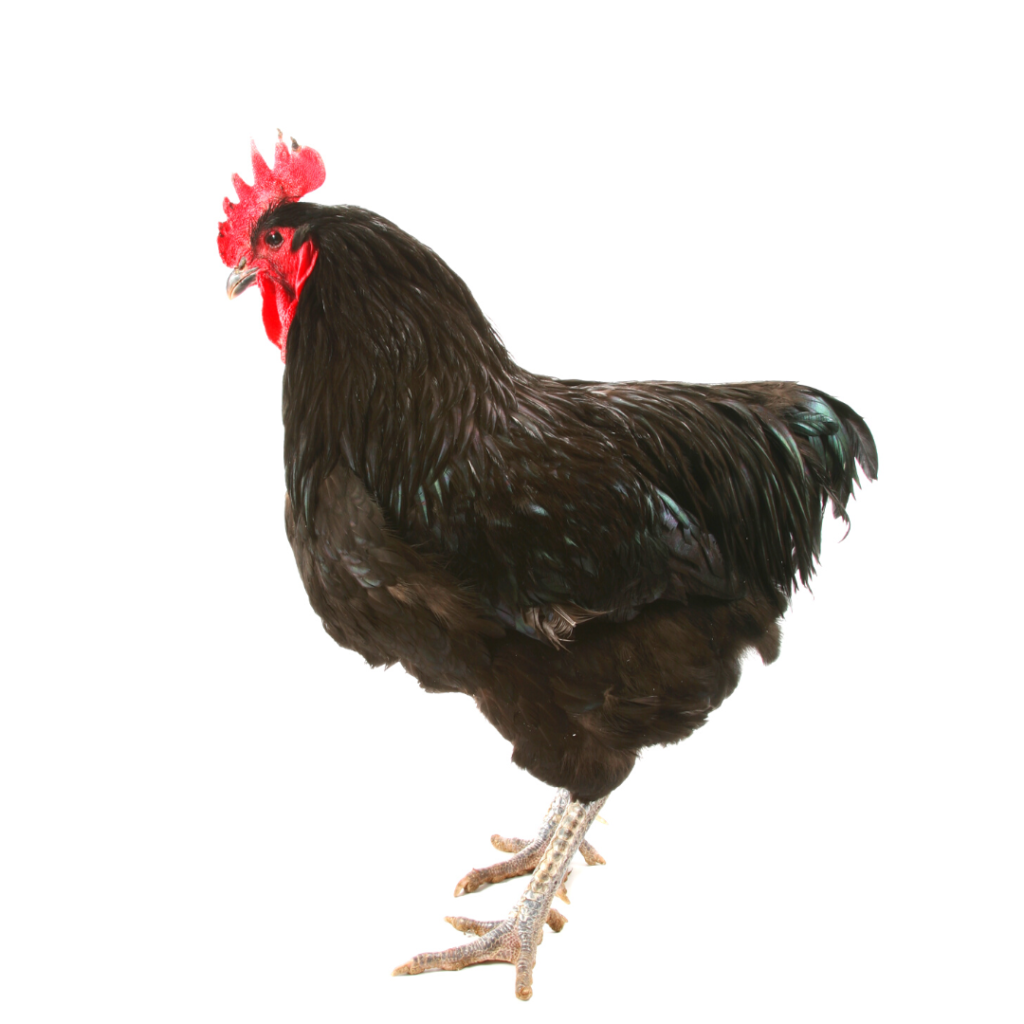
History
The Jersey Black Giant chicken breed was developed in the 1800s in New Jersey. They were created by crossing several different chicken breeds, including the Brahma, Cochin, and Langshan.
The Jersey Giant was created with the intention of being a dual-purpose bird, meaning it would be used for both meat and egg production. However, they are not as good at laying eggs as some other egg-laying breeds.
Jersey Black Giants were first recognized as a distinct breed in 1922.
The early giants were exceptionally large, black-feathered meat chickens with good foraging and laying capacity. However, their name didn’t stem from the color of the feathers they had; it referred to two brothers who first bred these birds back in 1857!
From the 1870s to 1890s, Thomas and John Black from New Jersey began perfecting what would become known as “Black Giants” in Burlington County. They were later renamed after their place of origin–a recognition that is likely why there was less confusion when White and Blue jersey giants came out soon after.
The first “Black Giants,” as the breed was initially called, were created from crossing Black Javas, Dark Brahmas, and Langshan hens. Later on, they added Cornish chickens to improve growth rates.
“The Jersey Giant was recognized by the American Poultry Association (APA) Standard of Perfection in 1922. The white was recognized in 1947 and the blue in 2003. So today, Jersey Giants are accepted in the APA in three color varieties – black, white, and blue.”source: Livestock Conservancy

Breed Standard and Appearance
The Jersey Giant is a large chicken, with roosters weighing up to 13 pounds (occasionally even 15 pounds)and hens weighing up to 11 pounds. They stand about 22 – 26 inches in height. Even at a young age, they are an impressive size: Jersey Black Giant Pullets – 8 lbs and Jersey Black Giant Cockerels –11 lbs.
Black Jersey Giant Chicks Video
Here’s a video of the Jersey Giant chicks for sale at a well-known hatchery.
Jersey Giant Temperament and Disposition
Jersey Giants are friendly birds that make great pets. They are less aggressive than some chickens and get along well with children.
Variations of the Jersey Giant
Jersey Giants come in a variety of colors, including black and white. The American Poultry Association (APA) has accepted three colors with Standards for Perfection: original Black 1922; White 1947; Blue 2002. Splash giants are not officially recognized by APA but can be found across America they breed their birds to produce this unique variation!
Black Jersey Giants
The Black Jersey Giant chicken is known for being large and sleek with black feathers that give off an iridescent sheen when in flight or under bright lights. However, some bird fanciers believe these feathered giants have white coloring at certain development points.
Faint copper/red markings might show up now and again though these aren’t always what breeders look out for when deciding whether a bird is “good” quality breeding stock. However, for the everyday backyard poultry owner, they’re just as stunning as the Black Jersey Giants.
Blue Jersey Giants
The Blue variety of Jersey Giants are a rarer variety of the Jersey Black Giant chicken breed. These birds are blue in color rather than black. Blue Jersey Giants were first developed in the 1970s and are not as common as their black counterparts.
Breeding for the blue coloration is not what you might expect. The blue is more of what we would refer to as a slate blue. Blue Giants have dark feathers on their legs.
White Jersey Giants
are another rare variety of the Jersey Black Giant chicken breed. As their name suggests, these birds are white in color. White Jersey Giants were first developed in the 1980s and are even less common than Blue Jersey Giants.
These birds are bred from mating only white Jersey Giant roosters with white Jersey Giant hens. Any other variation of color entered into the breeding pool would most likely result in all-black jersey giant chickens from their genetic history.
Other Huge Chickens Breeds include:
Australorp, Barred Plymouth Rock, Bielfelder, Brahma, Cochin, Cornish, Orpington, New Hampshire Reds, and Rhode Island Reds.
Caring for Jersey Giant Chickens
Jersey Black Giant chickens are relatively easy to care for. They are a hardy breed that is resistant to disease. However, Jersey Giants are prone to obesity, so providing them with a healthy diet and plenty of exercise space is important.
These birds do best when they can either forage by free-ranging, a tractor-mobile run area, or by having a larger, even oversized run area with plenty of activities like swings, perches, and areas to scratch and move around.
Hen to Rooster Ratio
Jersey Giants are a large chicken; you should expect to have about one rooster for every nine hens. This ratio will help to ensure that your Jersey Giants have enough space to roam and that the roosters do not become too aggressive with each other.
Also, consider if they are with hens of a smaller breed than their giant size. They can cause harm to an average chicken-sized hen. You may want to give a second thought to having a huge rooster if you have a mixed flock (variety of breeds)
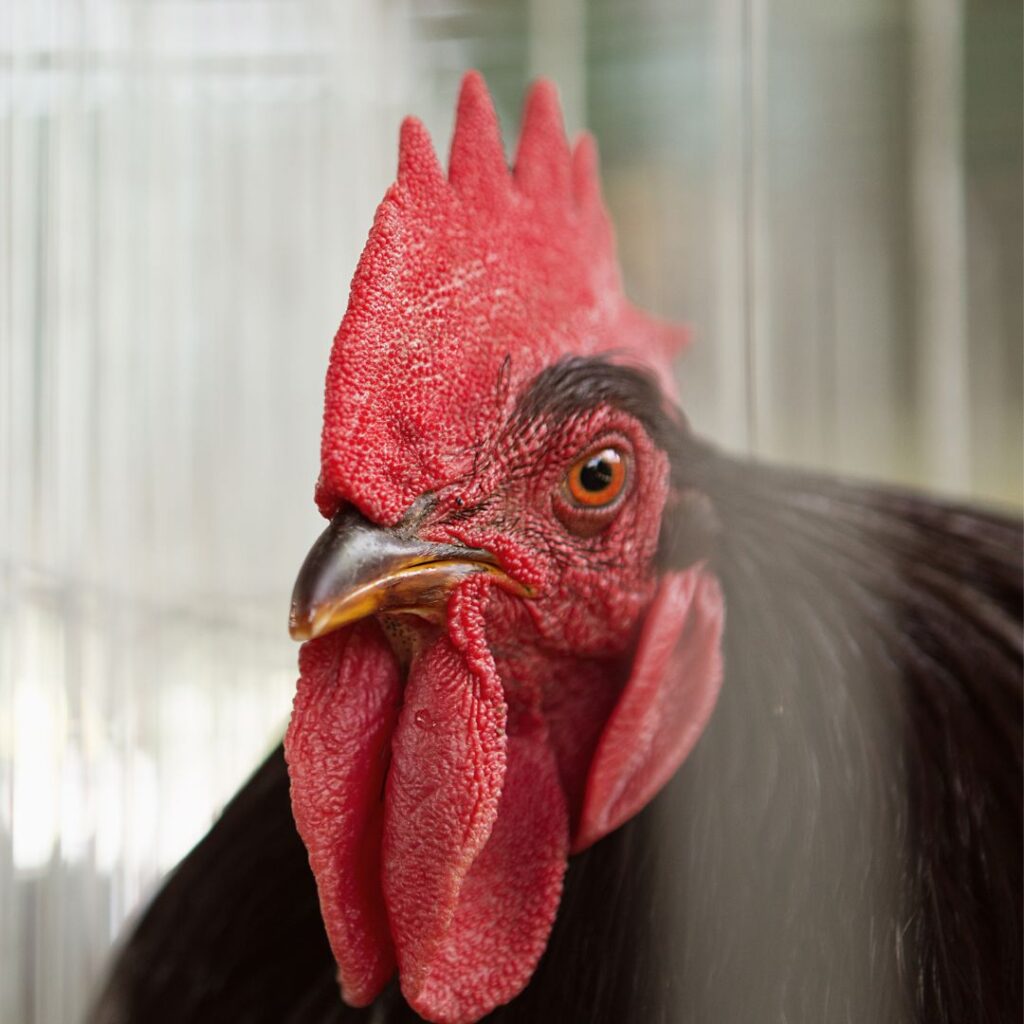
| Jersey Giant Eggs: | Yes, Large Brown | 175-250 per year |
| Personality: | Friendly | |
| Free Range: | Yes | |
| Heat Tolerant: | Yes | |
| Cold Tolerant: | Yes | |
| Bird Size: (world’s largest chicken breed | Large | |
| Meat: | Yes | |
| Weeks to Maturity: | 20 weeks | |
| Jersey Giant Rooster Mature Weight: | 13 pounds | |
| Jersey Giant Hen Mature Weight: | 10 pounds | |
Egg Production
Jersey Giants are not the best egg-layers, but still, a decent amount of eggs are produced with hens only laying about 175-250 eggs per year.
They may not compete with the egg-laying breeds but in comparison to other large breeds like the cornish hen, they lay a decent amount of eggs. This egg layer made it to the list of top egg layers along with the famous Leghorn.
when do jersey giants start laying
Large birds typically start laying later than ‘standard’ sized breeds. Jersey Giant hens have been known to lay as early as 5 months (20 weeks); however, on average, the hen will start regular production around 8 months (32 weeks).
Find Out More About How Long Chickens Lay Eggs here.
Meat Production
Jersey Giants are a good choice for those looking for a large and muscular breed. They make excellent table birds, with roosters weighing up to 13 pounds.
Predators and Pests
Jersey Giants are large birds that hawks will avoid. Still, there are plenty of other predators, and they can be aggressive when hungry. It’s always best to guard your flock with a dog, donkey, or fencing.
Like all chickens, they are susceptible to pests such as mites and lice. It is important to check your Jersey Giants regularly for signs of pests and to treat them immediately if you find any.
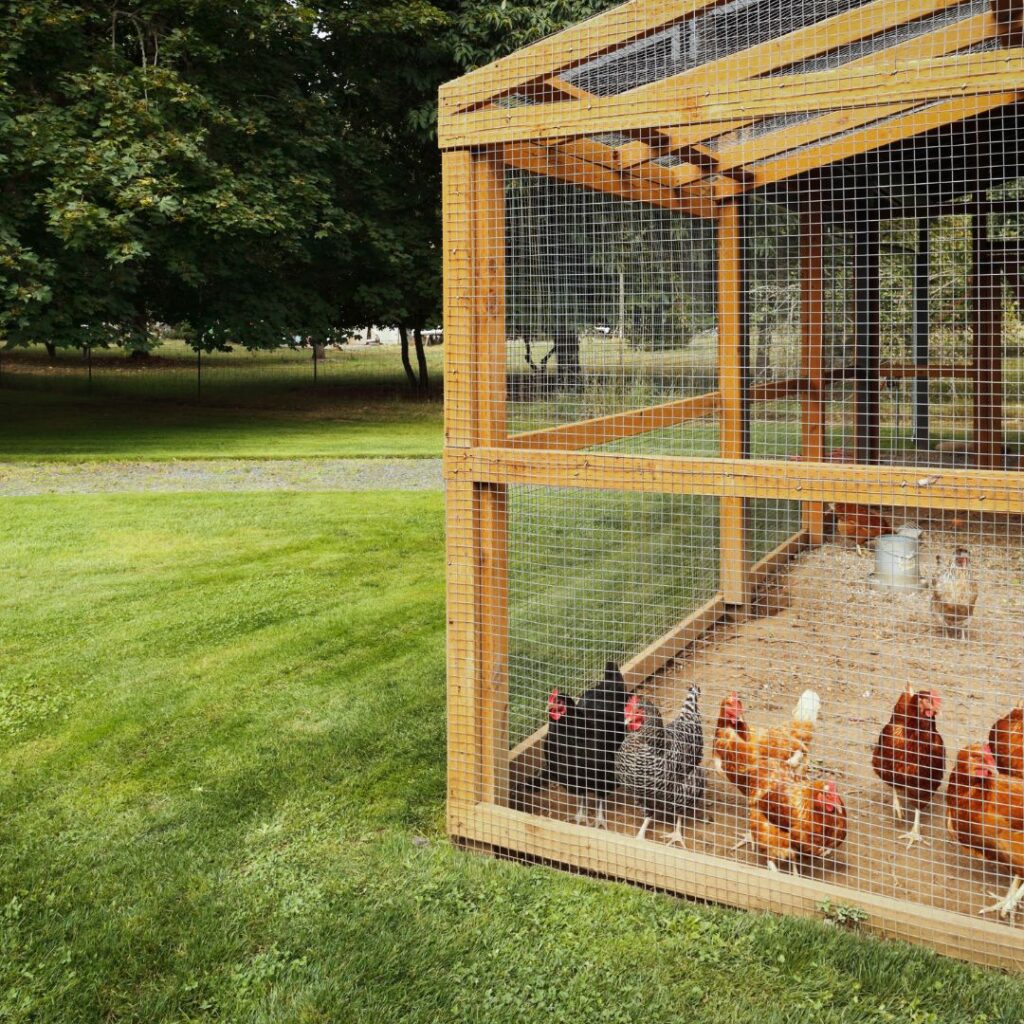
Coop Space needs
Jersey Giants are a large breed, and you should expect to have about eight square feet of coop space per bird. This will help to ensure that your Jersey Giants have enough space to move around and that the coop is not too crowded.
Giants are large chickens and require a lot of elbow room. They can stand up to 26-28 inches tall, so keep this in mind when planning your coop layout! You will need 6 – 8 square feet for each chicken.
Their height requires that they have enough headroom too. Ideally, the ceiling should be at least 24 inches above their heads while also allowing roosting space to be 15-18 inches.
Jerseys are heavy birds, so they need to jump from high places. This can lead to problems with their legs and feet if they jump down too far from perches- the ideal spot is 2 feet off the ground.
Nesting boxes should be 18″ x 18″, and placed at least 1 foot deep in order not to break any eggs. You’ll also want to keep the nesting boxes a bit more full of nesting materials to cushion the eggs.
Coop door size is often overlooked; ensure you have enough space for your Giant to get in and out safely.
If you have the space to accommodate these giants, then they may be the right breed for you! Thanks for reading, and feel free

Interested in a More Ornamental Breed? Read About One Of our Favorite Bantam Breeds,the Sebright Bantam Here or The Mille Fleur D’Uccle Bantam Here.
Outdoor Run Space Needs
Jersey Giants are a large breed, and you should expect to have no less than ten square feet of outdoor run space per bird. This will help to ensure that your Jersey Giants have enough space to move around and that the run is not too crowded.
They use this space to get exercise and fresh air so bigger is better.
Don’t forget enough space for dust baths; these are a favorite in hot weather.
Free Range/ Foraging
Jersey Giants are good foragers and do their best when allowed free-range. They are not as prone to wandering off as other chickens, making them a good choice for those with small yards or gardens.
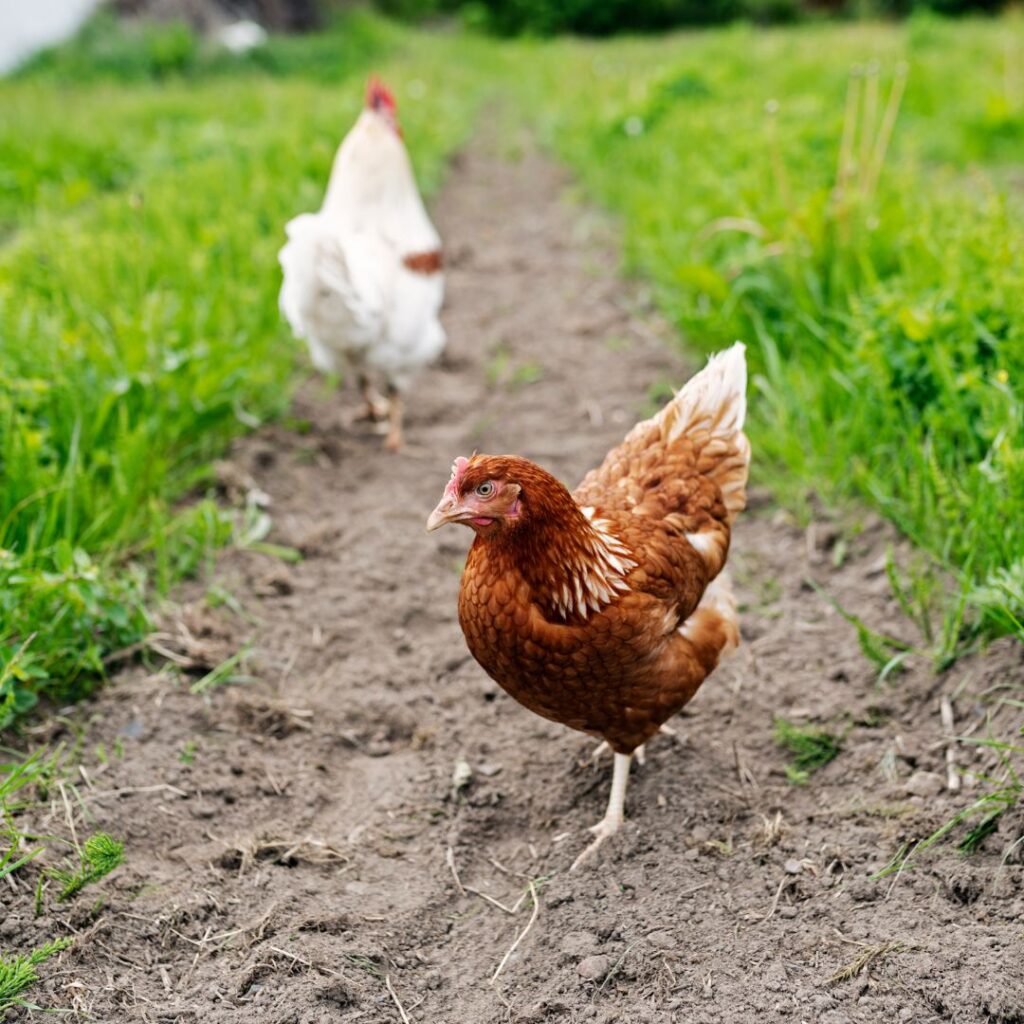
Feeding Requirements
Because of their size, they eat more than standard-size chickens. You can anticipate increasing your feed by almost 1/3. This will help ensure that your Jersey Giants have enough food to eat and get the nutrients they need.
Don’t try to regulate or limit feeding, be prepared to have more feed than with average-sized breeds and keep feeders fresh and filled at all times.
Treats Same rule of thumb with all breeds; Jersey Giants Menu should looked like 10% treats to 90% healthy nutritional feed.
Water Requirements
Jersey Giants should have access to fresh, clean water at all times. You should expect to change their water daily and clean their waterers regularly.
“The two waterers we prefer are a bit pricey but have decent capacity and are designed for multiple chickens. This heater waterer holds up to 2 gallons and can accommodate up to 15 chickens. This is adequate for most backyard chicken keepers. This second heated waterer holds up to 3 gallons and can accommodate up to 35 chickens. We like the detachable cord option on this for year-round use.”
— Gilmore’s , Chicken Care In Winter
Cold Hardy
Jersey Giants are a cold hardy chicken, and they can tolerate colder winter temperatures well. Their combs and wattles are still susceptible to frostbite so you may want to use petroleum jelly, or we love this Musher’s Secret Dog Paw Wax to help reduce the risk of this. Frostbite can be dangerous and even fatal for chickens.
They should be provided with a warm shelter during the winter months. Also, be certain to change the water more frequently as it freezes. You may want to invest in a container that prevents freezing.
The outdoor run area still needs a fair size shoveled out. We also recommend a lean-to made of an old piece of board so they can seek shelter from rain or falling snow while getting their daily exercise.
While they don’t mind the cold, your flock may prefer not to free range as often if there’s snow on the ground. They prefer the indoors when the snow or rain is falling.
Heat Tolerant
Jersey Giants are a heat-hardy breed, and they can tolerate warmer temperatures with proper shade and plenty of fresh water.
Remember, these are a giant breed, and their size can be a burden in extreme heat. Keeping plenty of cool fresh water (adding ice cubes and iced) is not just recommended; it’s essential.
Tip: pour some vegetable scraps or scratch into a pan of water and freeze; these make great summertime ‘cool’ treats for your flock.
If your flock is free-ranging, be sure they have trees or shrubs to forage under and keep cool in the shade. For runs, consider putting up a tented area or covering the run with a tarp.
Read About Reasons Chickens Stop Laying Eggs here
Get along with other breeds of chickens
Jersey Giants are a friendly chicken that gets along well with other breeds. However, they should not be kept with aggressive chickens.
The roosters have a strong male instinct, so while they will be o.k. with an adequate amount of hens of their own breed, putting them with smaller, average size hens is not a good choice. They could cause damage to those hens.
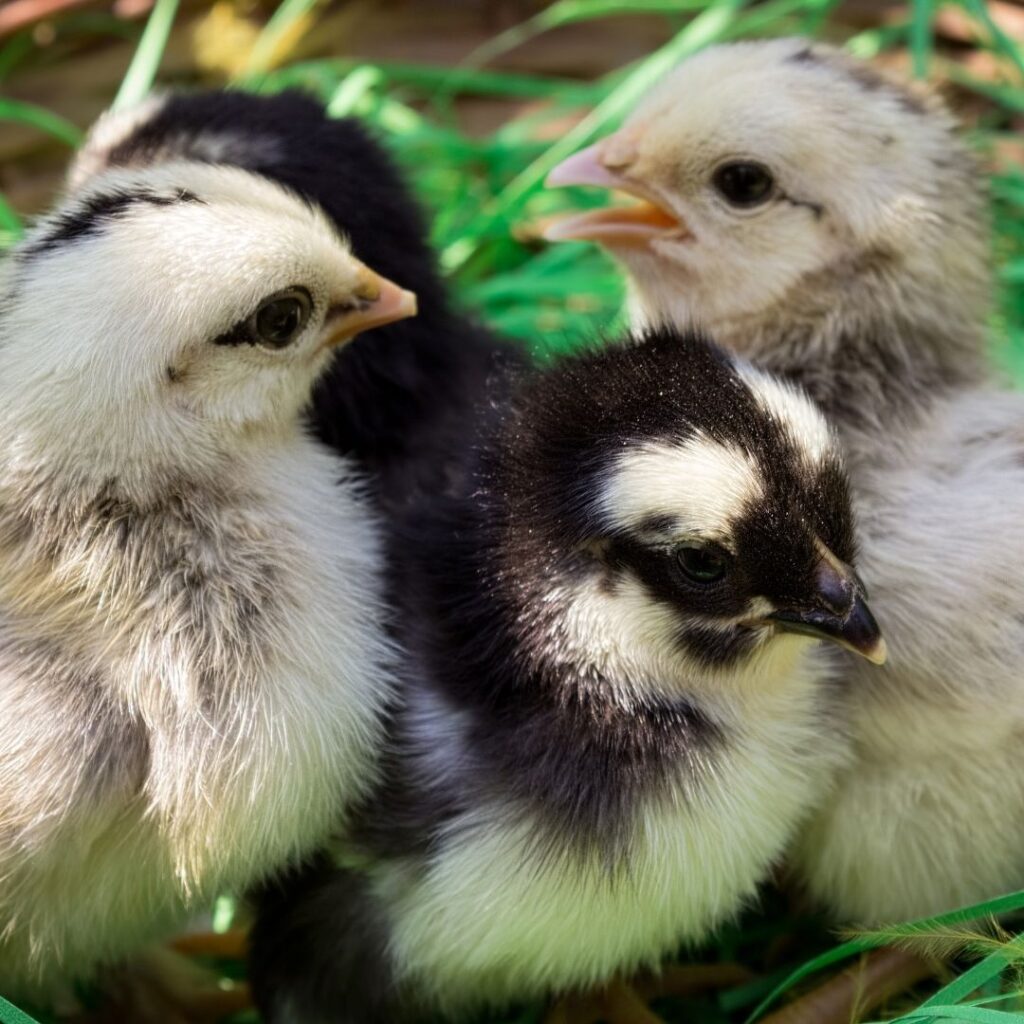
Get along with children
Jersey Giants are a friendly chicken that gets along well with children. They are not as prone to aggression as some other breeds, making them a good choice for families with small children.
Because of their large size, your kids may even view them more like having a feathered puppy instead of a giant chicken.
Still, we recommend that small children never be left unattended with any flock or livestock for that matter. It’s just plain common sense not to put the child or animal in a situation that could go awry.
Life Expectancy
Jersey Giants have a lifespan of about eight years. However, some have been known to live 2-4 years longer with proper care.
Pros of owning a Jersey Giant Chicken:
They are beautiful and sweet giant chickens and attractive to watch as they free-range.
The Jersey Giants are a good choice for those looking for a large and muscular chicken. They make excellent table birds, with roosters weighing up to 13 pounds. Other large breed chickens can be found here.
The Jersey Giants chickens are a friendly chicken that gets along well with children. They are not as prone to aggression as other breeds, making them a good choice for families with small children.
Jersey Giant chickens have a lifespan of about eight years. However, they can live up to 12 years with proper care.
They lay a decent amount of eggs per year (average 220)

Cons of owning a Jersey Giant Chicken:
Jersey Giants are a large chicken, and you should expect to have about eight square feet of space per bird in their coop. This will help to ensure that your Jersey Giant chicken has enough space to move around and that the coop is not too crowded.
If you do not have enough space for your chickens, it will lead to some problems. Crowd chickens are more likely to fight and peck at each other. This can cause injuries and even death. In addition, if your chickens are too close together, they will not be able to get the exercise they need and their muscles will weaken.
These birds will also need a minimum of ten square feet per bird in an outdoor run area.
Although the Jersey Giant chicken is cold hardy, they have large wattles, making them more susceptible to frostbite. Be prepared to do some preventative care, or you may be in for a chicken in a lot of pain and potentially worse. You won’t want one cold spell to destroy a whole flock.
Jersey Giants can be quite chatty (aka noisy). They are known for their loud clucking and crowing, which can be a nuisance to your neighbors. If you live in an area where noise is a concern, you may want to choose another breed. This may definitely be a negative for urban hobby farmers who desire to become Jersey Giant chicken owners.
They will steal. Steal your heart, that is. They’ll be the center of attention when anyone comes to visit. If you like being the center of the show, this is not the bird for you. The Jersey Giant is a show-stopper, that is for sure.
Other unique chickens for your mixed flock are a blue egg-laying Araucana, Americauna, or the Rainbow Egg Layer, Easter Egger.
Conclusion
Jersey Giants are a good choice for those looking for a large, friendly chicken breed. They are not as prone to aggression as some other breeds, making them a good choice for families with small children. The Jersey Giant breed has a lifespan of about eight years. However, they can live up to 12 years with proper care.
They are a great choice for the homesteader and backyard hobby farmer; they produce an adequate amount of large eggs and are a dual-purpose bird, meaning they are also great for meat. And seriously, the Black Jersey Giant would make a great Christmas Card Photo Op! When choosing a breed of chicken, the Jersey Giant is a great all-around choice.
Are you just now looking into starting your own flock? The Jersey Giant is a Great Choice. Find out more about how to raise backyard chickens for beginners first so you’re not overwhelmed.
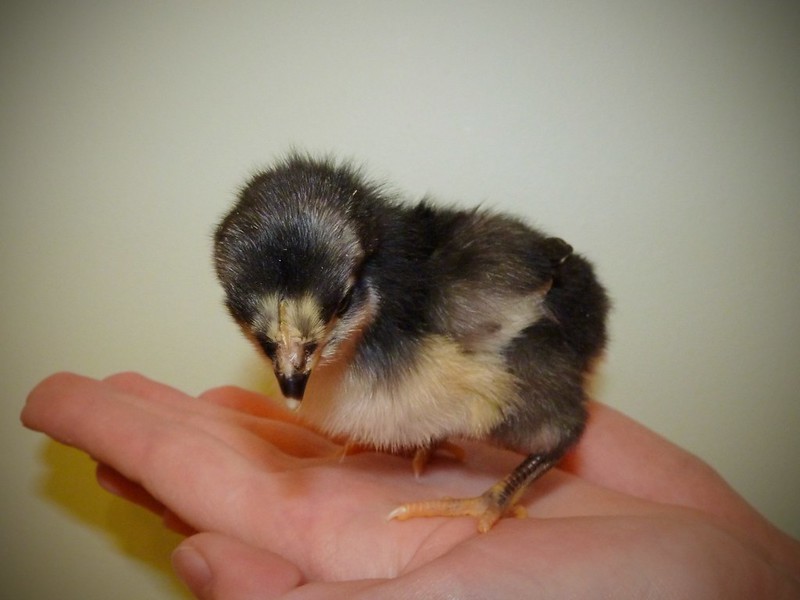


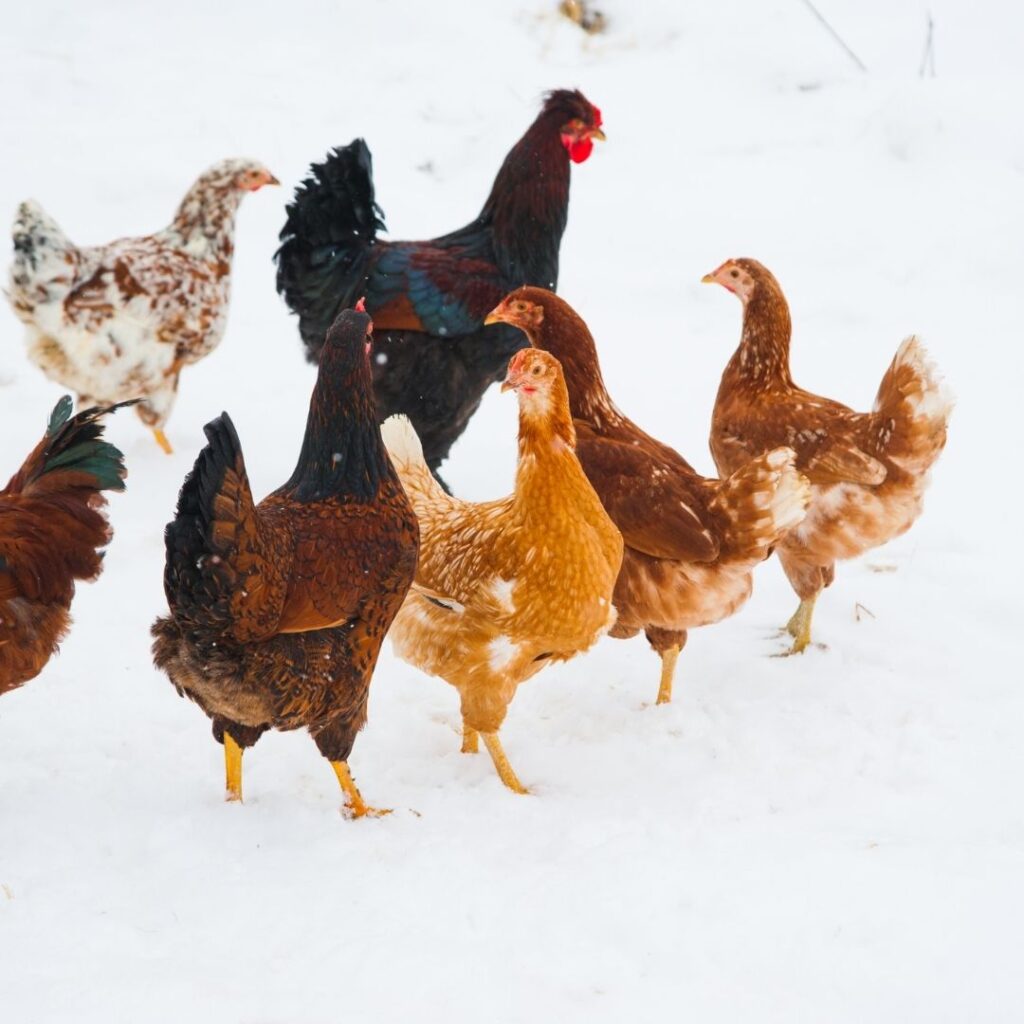
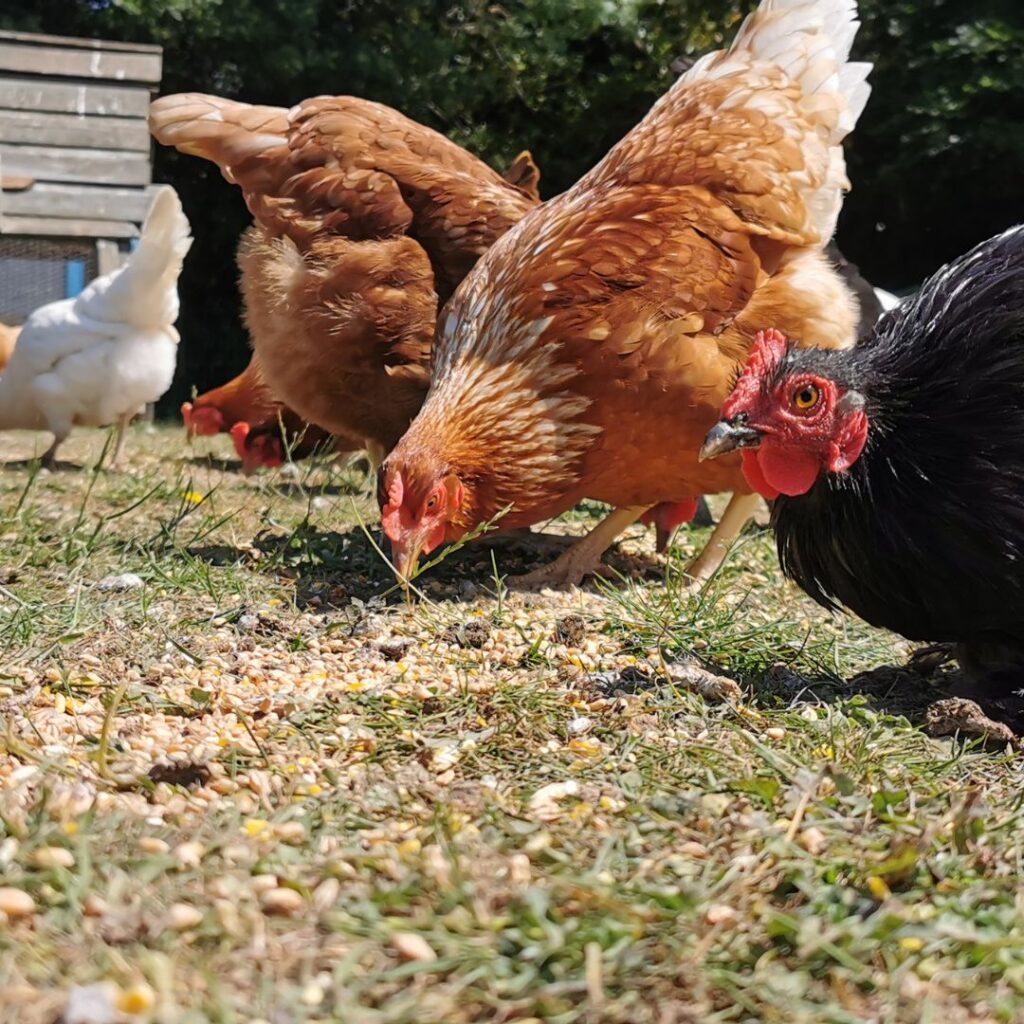
Pingback: Cornish Chickens: A sweet Heritage Breed - Gilmore's
Pingback: 18 Cold Hardy Chicken Breeds For Harsh Winters - Gilmore's